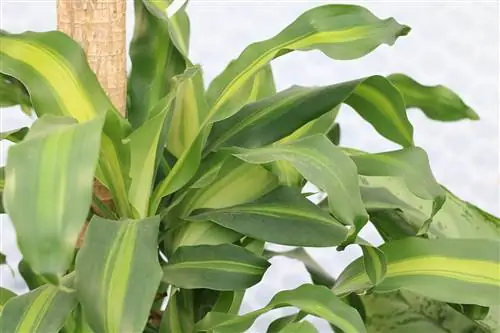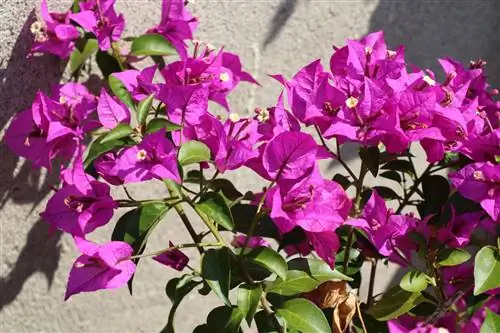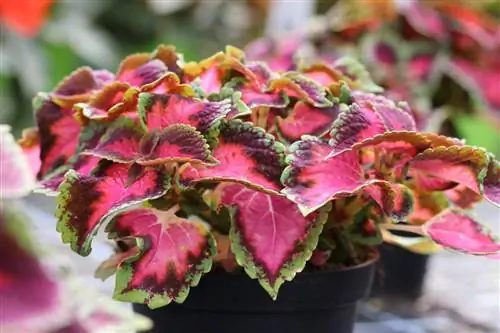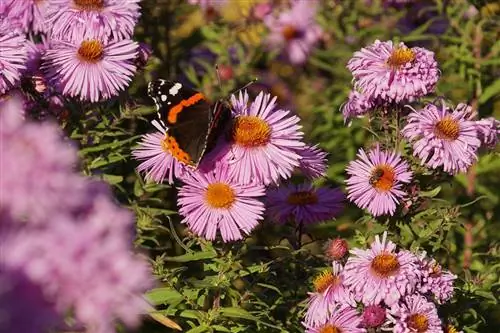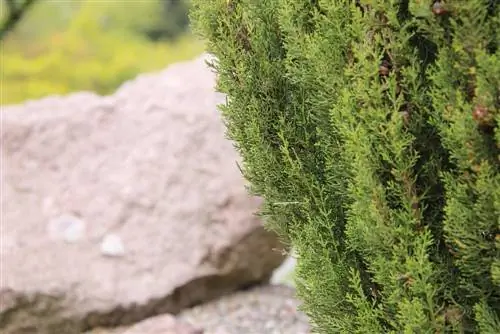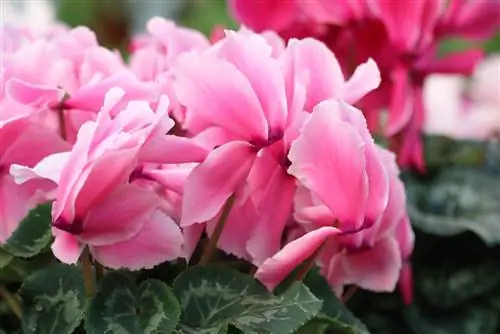- Author admin [email protected].
- Public 2023-12-17 03:39.
- Last modified 2025-01-24 12:45.
The dragon tree loves the sun and likes it to be very warm all year round. It is not hardy and has to go into the apartment to overwinter if it is left outside in the summer.
Not a typical garden plant
Dracaena, as the dragon tree is officially called, is actually not a typical garden plant for us. It is rarely planted directly outdoors, but rather is found in planters, which are usually placed on the terrace. He then spends the summer there and especially enjoys the sun. With the end of summer approaching, he definitely needs to be brought into the apartment because he doesn't like cold or cold weather.tolerates cool temperatures.
Tip:
If temperatures of a maximum of 15 degrees Celsius threaten in late summer, Dracaena should definitely be brought into the house and sent into hibernation there.
Ideal temperatures
Almost all types of dragon trees feel most comfortable when there are consistently warm temperatures all year round. The ideal range is between 18 and 24 degrees Celsius. This also applies explicitly to the winter months.
Tip:
It is important to ensure that the temperature in the apartment does not fall below 18 degrees Celsius. Under no circumstances should it be cooler than 15 degrees Celsius even at times.
Dracaena reacts very sensitively to temperatures that are too low. This is usually very easy to recognize because it then leaves the leaves hanging very quickly. Although there are also types of dragon trees that can cope well with low temperatures of around ten degrees Celsius, these types are the exception and are certainly not the rule. As soon as a dragon tree starts to lose its leaves in your home, you should definitely take action and increase the temperature. The general rule is: Old specimens that have a particularly thick trunk can cope surprisingly well even with low temperatures.
Ideal location
The perfect location for Dracaena in the apartment is of course a windowsill on a south-facing window. Even in winter, the plant should get as much sun as possible. However, it is important to ensure that the leaves do not get sunburned. In addition, the dragon tree should always be at a certain distance from the window pane and be able to unfold without its leaves touching the pane.
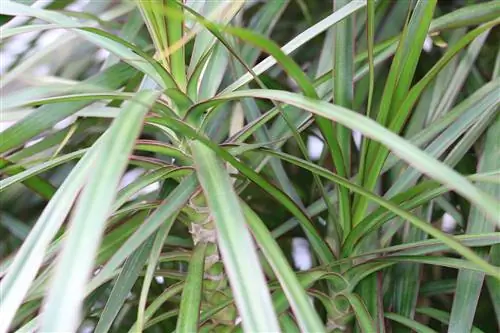
Sun is very important for the plant even when overwintering, but it should only be exposed to it in moderation.
Tip:
The plant always grows in the direction of the sun. In order to achieve the most even growth possible, it should be turned every now and then.
The right care
Dracaena is not hardy, but it still needs to be looked after during the winter months. The following activities in particular must be adapted to the changed conditions:
Fertilize
The dragon tree should not be fertilized at all during winter rest. The nutrients in the soil are usually completely sufficient to supply the plant adequately.
Pouring
Watering, however, looks different. A regular water supply is very important for the plant, even in winter. However, watering should always be very moderate. The best way to do this is to check the soil around the root area by hand every day:
- rub some soil between two fingers,
- If it feels crumbly or dusty, it's time to water.
Tip:
The dragon tree only needs to be watered when the soil around the roots has dried out or dried out. Even then, it makes sense to only give moderate amounts of water.
After overwintering
When winter finally comes to an end, Dracaena can of course be brought outside again. However, it is important that there is no longer any risk of night frosts. Normally this should be the case from May. Since the plant is not hardy, it would definitely not tolerate frost and would die as a result. The plant pots with the dragon trees should ideally be placed on a terrace. The location may
- have lots of sun,
- but it shouldn't be in the blazing midday sun.
It also needs to be somewhat sheltered from the wind so as not to endanger the plant.
Tip:
After overwintering, the best way to get the dragon tree used to life outdoors again is to initially put it on the terrace for just a few hours every day.

